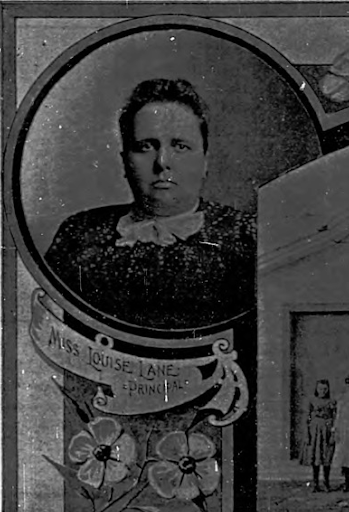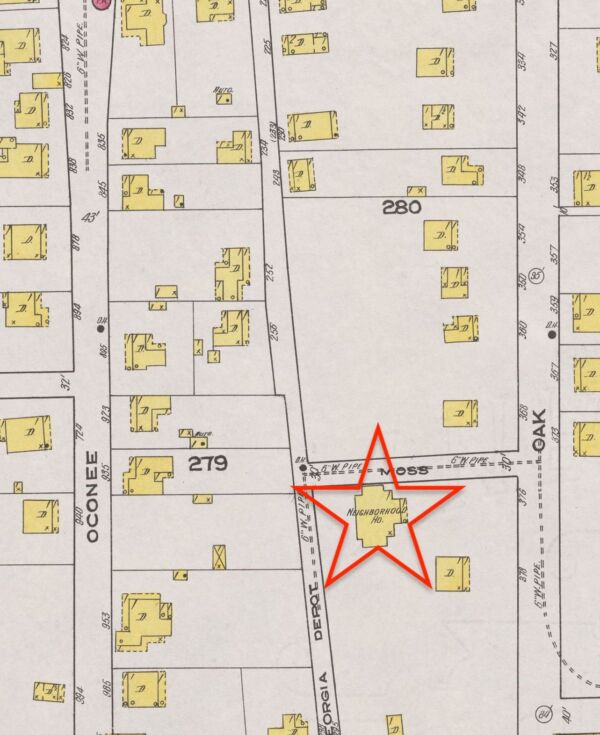Social Services for Mill Workers and their Families
The building that currently houses UGA School of Social Work was once owned by the Athens Manufacturing Company. Until the 1920s, the building was a thread and cotton mill where both adults and children worked long hours operating machinery in poorly-ventilated spaces. After Emancipation in 1865, the mill labor force in Athens—and across the South—became racially segregated, and work in the mills (with the exception of heavy labor) was restricted to white laborers (Gagnon, 2012). As was common at the time, the owners of the Athens Factory built housing for their white mill employees, and the “mill villages” developed into close-knit communities. When Athens’ mills were operating, the streets near the School of Social Work were full of mill housing, as was Carr’s Hill and much of the East Side.
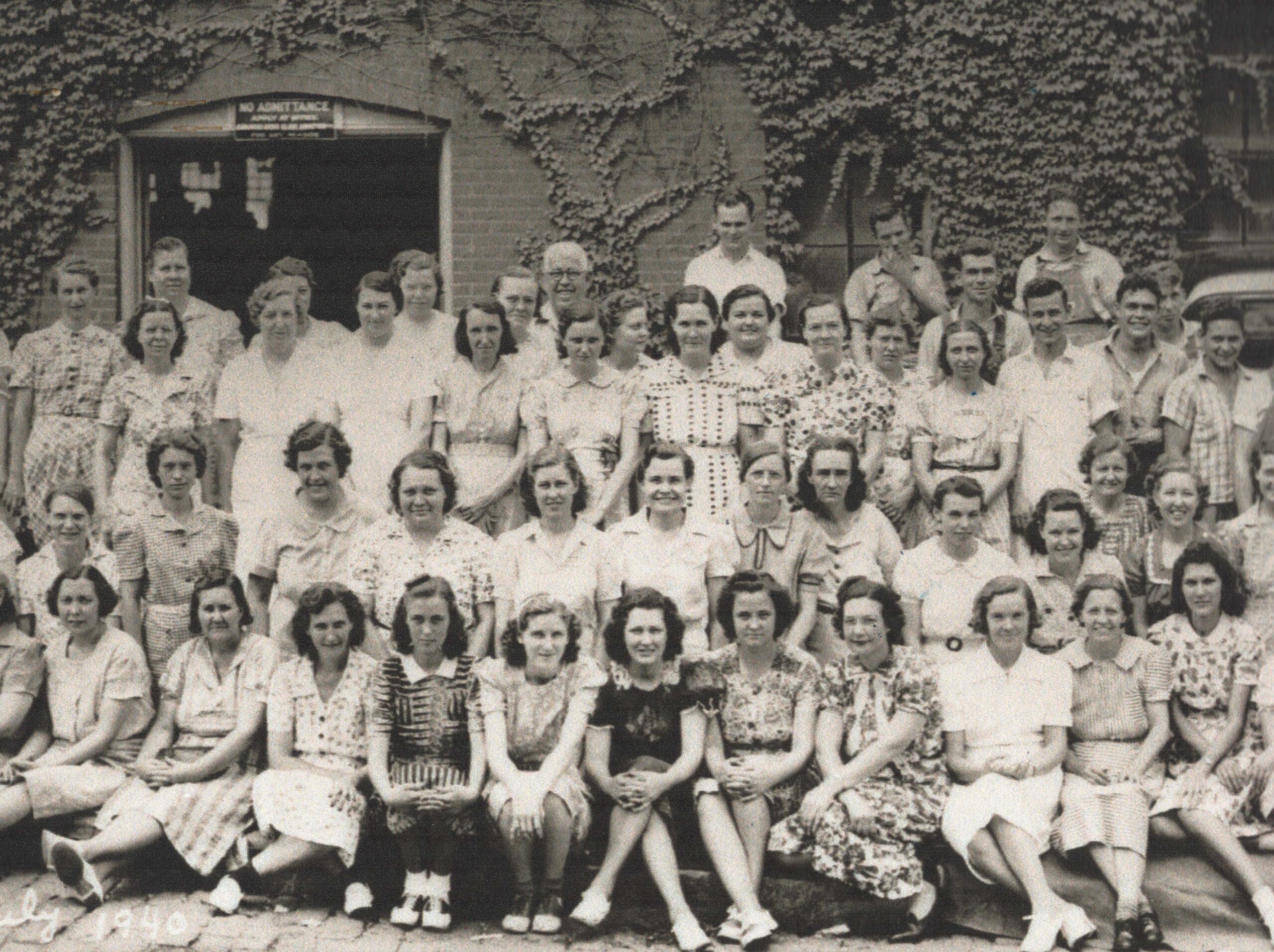
This 1940 photo of Climax Hosiery Mill workers is typical of the all-white workforces that operated Georgia’s cotton mills and clothing factories from the Civil War until the Civil Rights era. The Climax Mill was located across Oconee Street from the School of Social Work parking lot, where The Rive, a student housing complex, is located now.
Photograph courtesy of Gary Doster
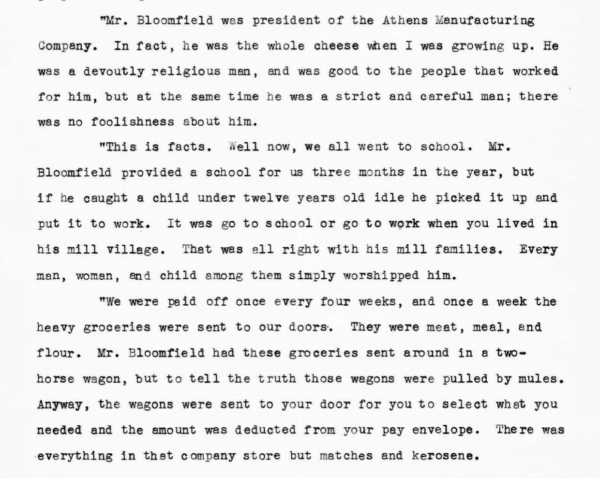
Henry Hunt describes growing up in the Athens Manufacturing Company mill village in his 1939 interview with the Federal Writer’s Project. According to Hunt, who was born in 1871, Bloomfield provided three months of annual schooling to the mill kids during his childhood.
At first, services of all kinds were supplied by the mill owners. The tradition of paternalism was strong in the Georgia’s 19th– and 20th-century cotton mills, and mill owners wanted their workers to be content even though wages were low (management did not want to see strikes or unions). In the case of the Athens Manufacturing Company, Robert Bloomfield was a very engaged mill owner; according to Henry Hunt, a man who was born in the factory’s village in 1871, “Bloomfield visited every house and knew every man, woman, and child that lived in his village by their first names.”
For his workers, Bloomfield supplied housing and groceries (the cost of which were deducted from their paychecks). He also supplied holidays for watermelon season and Christmas. In the realm of human services, Bloomfield also provided some care for the sick and a seasonal school to teach children the basics of reading, writing, and arithmetic.
Bloomfield, a deeply committed Episcopalian, was eager for his workers to receive basic religious instruction and the sacrament of baptism. He joined members of Emmanuel Episcopal in outreach to the Athens Factory workers even before he took over the role of Factory Agent in 1863, and by 1869, he had laid the cornerstone for St. Mary’s Chapel in the heart of the mill village. Whole extended families worked for the mill and the same family members attended church and Sunday school at St. Mary’s. The chapel was also a gathering place for community picnics and other celebrations. As Henry Hunt remembered,
As children, how we did look forward to that Christmas tree at St. Mary’s! Good old Mr. Bloomfield built and owned that church that he provided for the hands working in his mill, and he furnished all the entertainments held there. We could always count on him to do the nice thing by us.
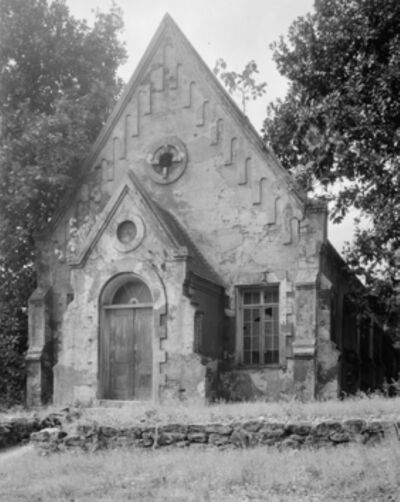
Robert Bloomfield laid the cornerstone for St. Mary’s Episcopal Chapel in 1869, and the chapel was in active use through 1898. This 1941 photograph shows the disused chapel with broken windows. Later, the church was the site of the rock band R.E.M.’s first concert and it became a pilgrimage site for the band’s fans after R.E.M rose to stardom. The church was torn down in 1990 and, today, only the steeple remains; it sits behind Nuçi’s Space off Oconee Street.
Hargrett Library, UGA
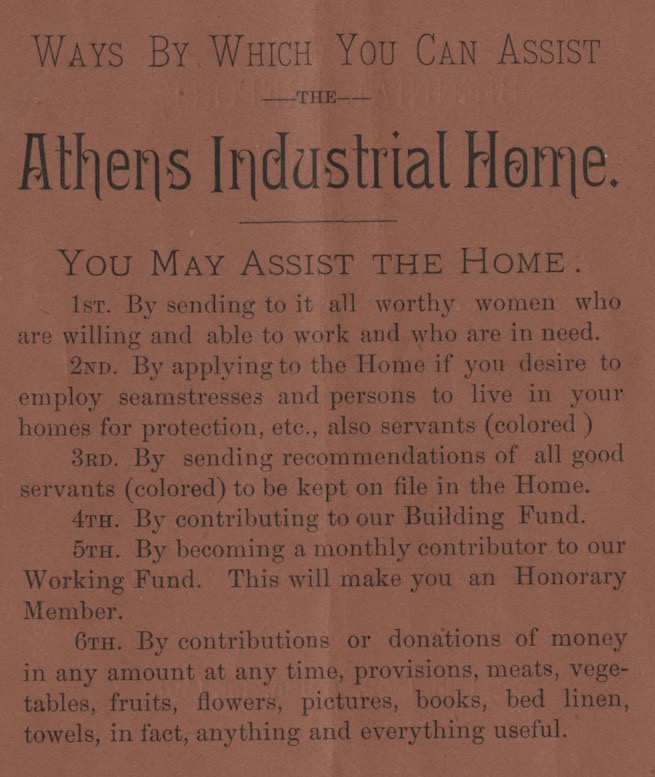
“Ways by which you can assist the Athens Industrial Home.” A pamphlet from an early fundraising campaign (c. 1890).
Hargett Library, UGA
Bloomfield’s ministrations were not enough to erase poverty, illness, and illiteracy in mill communities. These problems—especially among women and children—attracted the attention of Athens’ charitably-minded women. Near the end of the 19th century, the privileged white women of Athens opened the first social-work type services to serve and uplift the mill families. The Athens Industrial Home (later the Bessie Mell Industrial Home), which opened in 1889, was the first of these services; then the Night School in 1899; and after 1910, the Hiawassee Settlement and the Neighborhood House. The YMCA and other local charitable institutions were also engaged in improving the lives of mill families, and especially of their children.
Residents of Athens have been (and still are) active participants in efforts aimed at social and political reform. After the Civil War and during the Progressive Era, both Black and white Athenians worked to improve the quality of life for members of their communities. Still, it is important to note that while Athens’ middle-class white women formed multiple groups, schools, and agencies intended to promote literacy, public health, and skill-building for women and children, their efforts during the late 19th– and early 20th-centuries almost entirely ignored Black Athenians while improving life for white Athenians.

The Georgia Federation of Women’s Clubs scrapbook (c. 1920).
Hargrett Library, UGA
Cite this Article
Sources
Easom, M. P. & Arnold, P. H. (2019). Across the river: The peoples, places, and culture of East Athens. Sheridan Publishing.
Gagnon, M. J. (2012). Transition to an industrial South: Athens, Georgia, 1830–1870. LSU Press.

